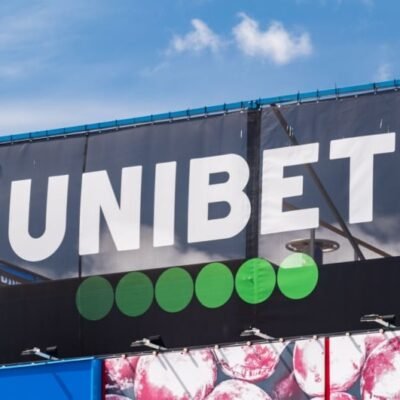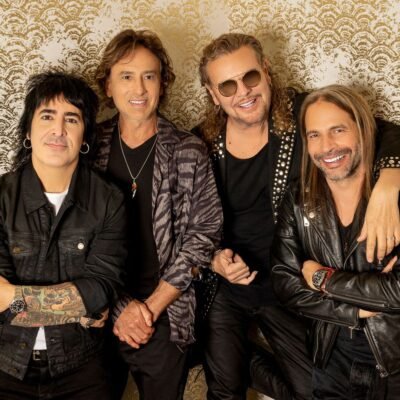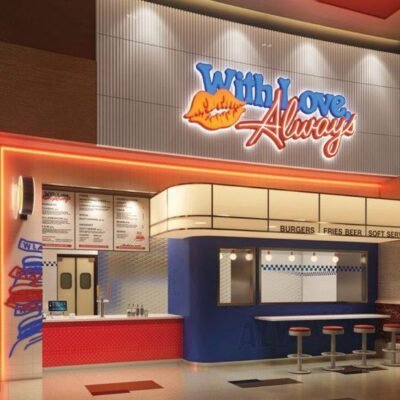
Las Vegas has cemented its status as a premier sports destination, moving far beyond its traditional identity as the “Entertainment Capital of the World.” With major league teams like the Raiders and the Golden Knights, Las Vegas has become a hotspot for passionate sports fans. Add in marquee events like the Super Bowl and Formula 1, and Vegas becomes a prime stage for brand promotion.
However, in a city known for its spectacle and sensory overload, simply having a presence isn’t enough. Brands must be strategic, innovative, and memorable to truly stand out.
This guide explores the unique opportunities and challenges of sports marketing in Las Vegas. It offers insights on how to cut through the noise and create a powerful, lasting impression that resonates with fans.
Tap Into the Star Power of Vegas Sports
Las Vegas has rapidly transformed into a global sports and entertainment powerhouse, evolving beyond its past reputation for gambling and nightlife.
According to CNBC, this sports boom includes blockbuster events like the $2.3 billion Sphere and a multibillion-dollar Formula 1 race. Super Bowl 58 at Allegiant Stadium, a 65,000-seat venue that also hosted sold-out Beyoncé and Taylor Swift concerts in 2023, is another highlight.
Vegas’s celebrity-driven atmosphere creates powerful opportunities for brand visibility. Partnering with teams or sponsoring game-day highlights like halftime shows or VIP suites helps connect with both locals and international visitors. To make an impact, brands should embrace Vegas flair through bold activations, luxury giveaways, or interactive, themed lounges.
By tapping into this powerful mix of sports excitement and city glamour, brands can turn visibility into lasting impact.
Maximize Media Moments with Strategic Visibility
In the high-visibility world of Las Vegas sports and entertainment, branded photo opportunities can significantly boost exposure. One strategic method to increase brand presence is through step and repeat walls, commonly used as backdrops for athlete interviews and fan photo ops.
These visually appealing installations offer a chance for logos to appear in countless media impressions. A crucial factor in their effectiveness is choosing the right step and repeat backdrop sizes.
According to Step and Repeat Las Vegas, standard sizes like 8×8 or 10×8 feet are ideal for smaller events. Larger backdrops, such as 8×20, create a stronger visual impact in more spacious venues. Design also matters. Keep logos large enough for visibility, use high-contrast background colors, and opt for high-quality, matte materials to avoid glare.
With fans, influencers, and media constantly capturing moments, a well-designed backdrop becomes a lasting visual tool for brand recall.
Create Interactive Brand Experiences
While visibility through media moments is key, brands that want to forge emotional connections with their audience must invest in interactive experiences. Sponsoring fan zones and lounges or activating halftime entertainment offers creative opportunities to engage attendees beyond logos.
These spaces allow brands to generate memorable moments through tactile, immersive engagement. Augmented and virtual reality installations can bring products to life, while social sharing stations encourage attendees to capture and broadcast their experiences. In a city that thrives on “Instagrammability,” photo ops with branded installations, immersive props, or mascots can trigger viral buzz and organic exposure.
Interactivity is the new currency in Vegas events, transforming fans into enthusiastic brand ambassadors. Designing entertaining, shareable experiences helps brands gain authentic user-generated content that amplifies reach beyond the event.
Collaborate with Influencers and Athletes
Partnering with Vegas-based pros or social media figures who specialize in sports and lifestyle content can dramatically amplify your brand’s visibility. From wearing branded gear to featuring your product in behind-the-scenes training videos or exclusive meet-and-greets, these collaborations bring authenticity and aspirational appeal.
They’re also central to the NBA’s evolving marketing strategy. As Bob Carney, the NBA’s SVP of social and digital content, noted: “These guys allow us to have an authentic voice.
We need to be where our fans are”, online and on mobile. The NBA recently put its content creators on the court, underscoring how influencer-led content resonates with younger fans through authentic, organic storytelling.
Curated partnerships like these turn passive audiences into engaged brand advocates and unlock new fan segments beyond traditional advertising.
Extend the Impact with Post-Event Content
The energy of a Vegas sports activation shouldn’t end when the event does. To sustain momentum, brands must craft a compelling narrative that lives on through post-event content.
According to Forbes, your event environment should feel like a stage. Every detail, from layout to follow-up, should reinforce your story. Post-event, share dynamic photos, videos, and interviews across social platforms and email newsletters to re-immerse your audience.
Highlight reels and curated posts showcasing fan interactions, especially with branded step and repeat backdrop sizes, can evoke excitement long after the final buzzer. Tagging teams, venues, athletes, and influencers boosts discoverability and reach. Integrate user-generated content for added authenticity.
Even your speakers, whether athletes or influencers, should be storytellers who align with your message. Finally, engage the senses through multimedia—soundscapes, visuals, or evocative imagery—to keep your brand’s narrative alive. Done right, post-event content transforms fleeting moments into lasting emotional connections.
FAQs
What is brand marketing in sports?
Brand marketing in sports involves promoting a brand through associations with athletic events, teams, or athletes. It includes sponsorships, branded experiences, and digital engagement to increase visibility, loyalty, and emotional connection with fans. This strategy helps brands tap into passionate sports audiences and enhance their market presence.
What is a target market in sports marketing?
A target market in sports marketing refers to a specific group of consumers most likely to engage with a brand’s products or services. This audience is defined by demographics, interests, and behaviors. Examples include sports fans, athletes, or event attendees, allowing marketers to tailor campaigns for maximum impact.
Is Vegas a big sports market?
Yes, Vegas has rapidly become a major sports market. With teams like the Vegas Golden Knights and Las Vegas Raiders, the city continues to grow its sports presence. High-profile events such as Formula 1 races and the Super Bowl attract fans, sponsors, and global media attention.
In the high-energy world of Vegas sports events, brand success lies in creating memorable, immersive experiences. From influencer collaborations to strategic post-event content, every touchpoint can amplify reach and resonance. By aligning with the city’s spectacle, brands can leave a lasting impression that goes far beyond game day.





